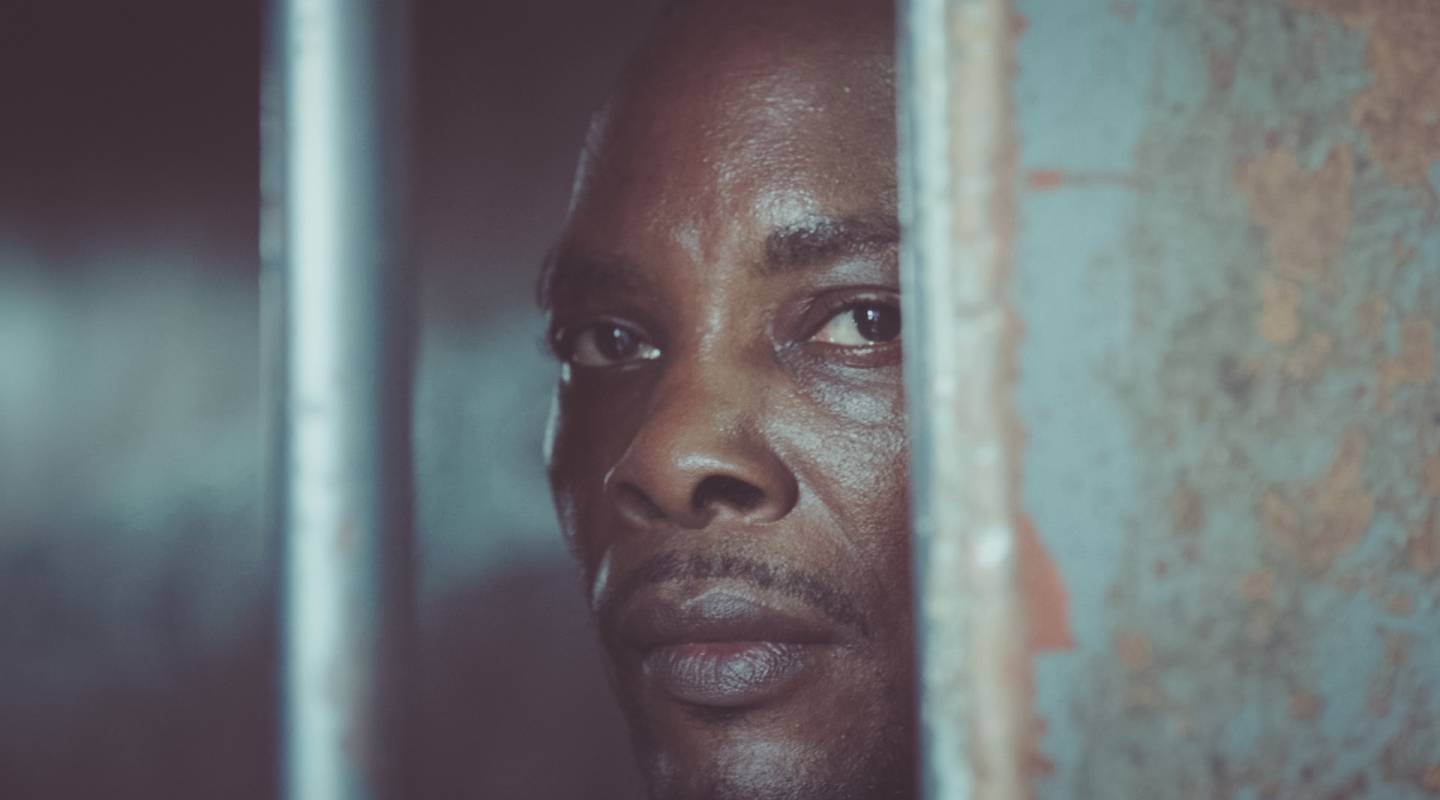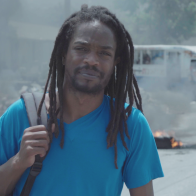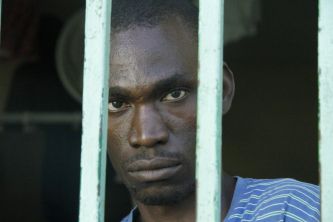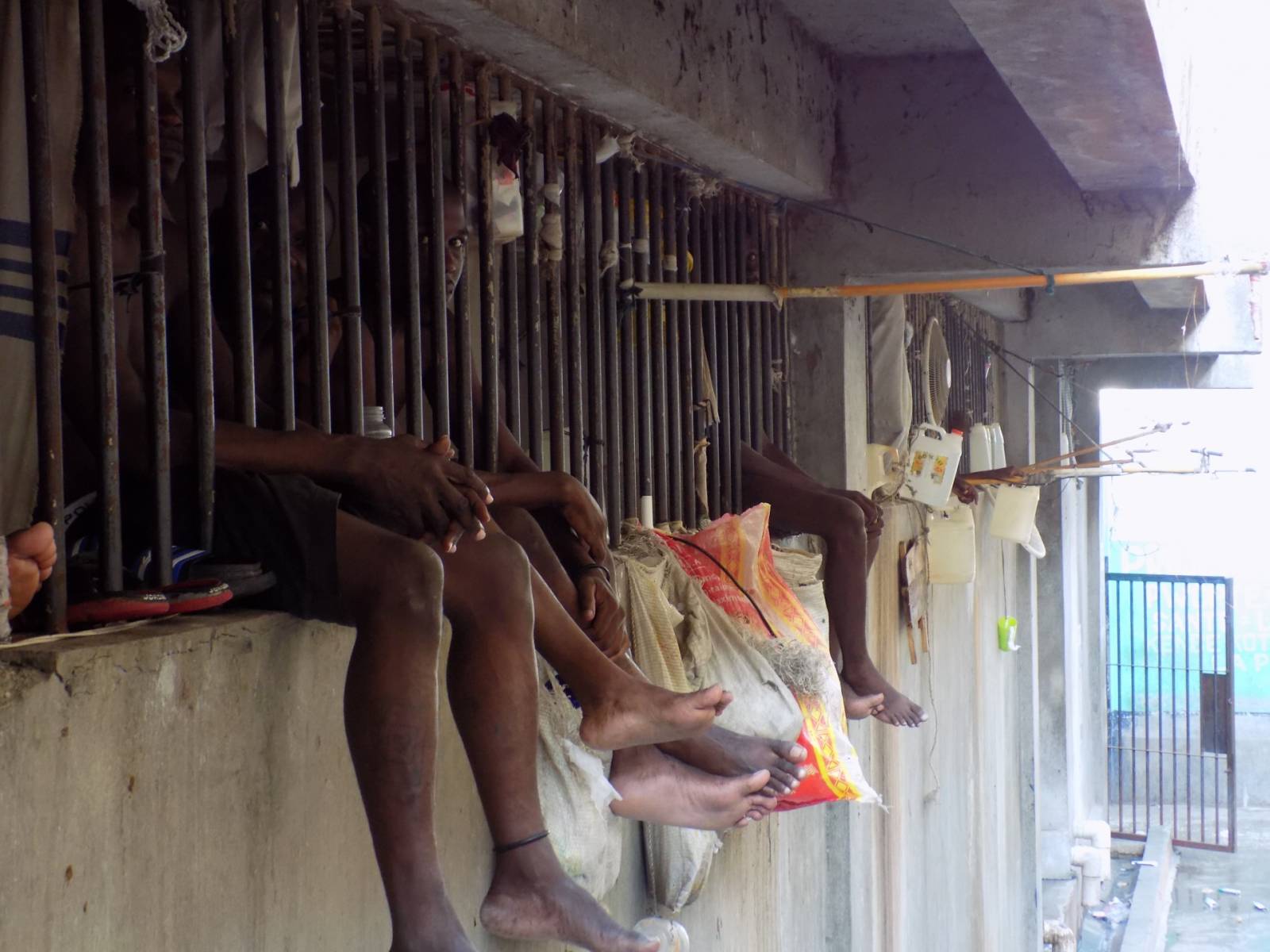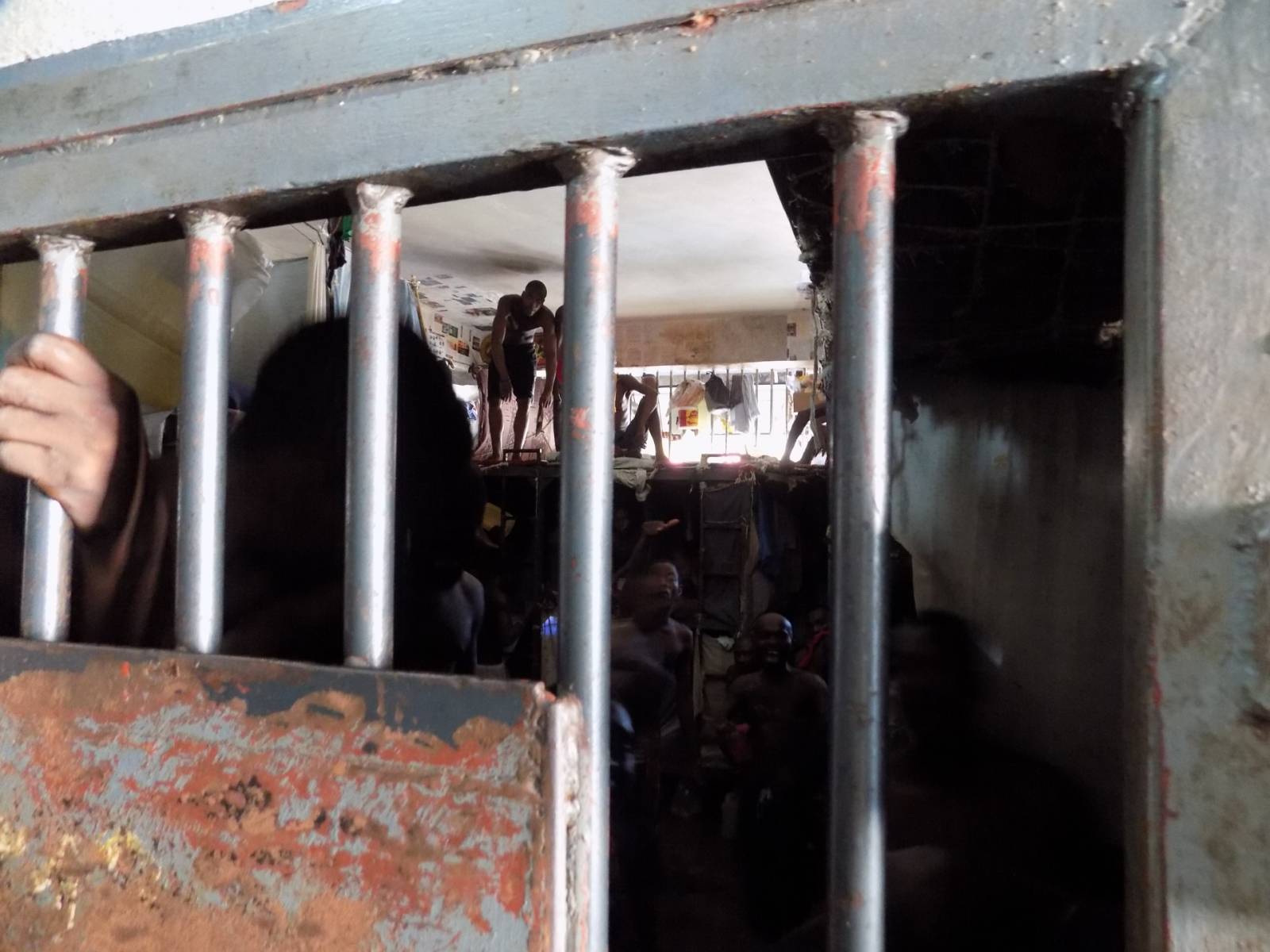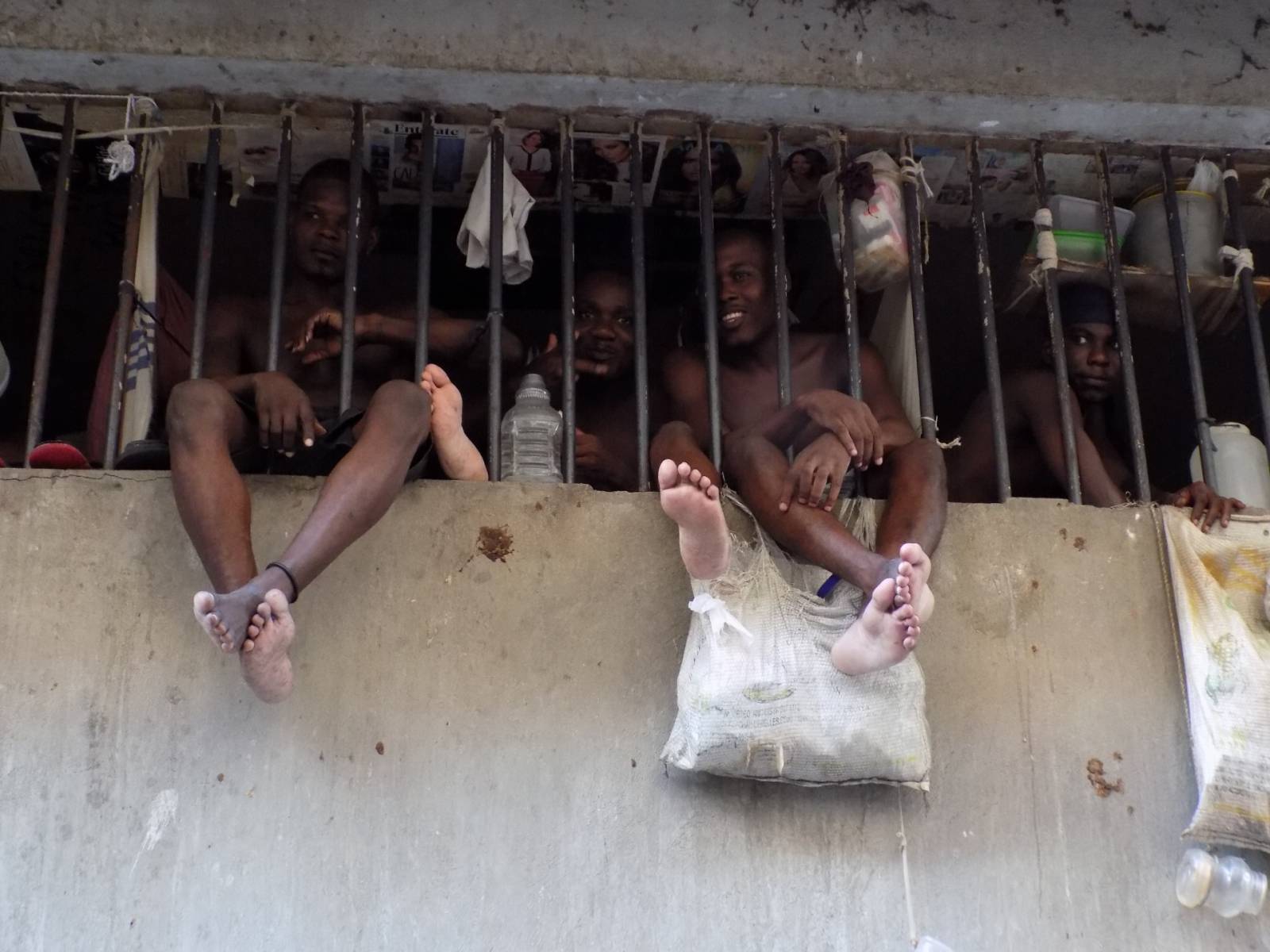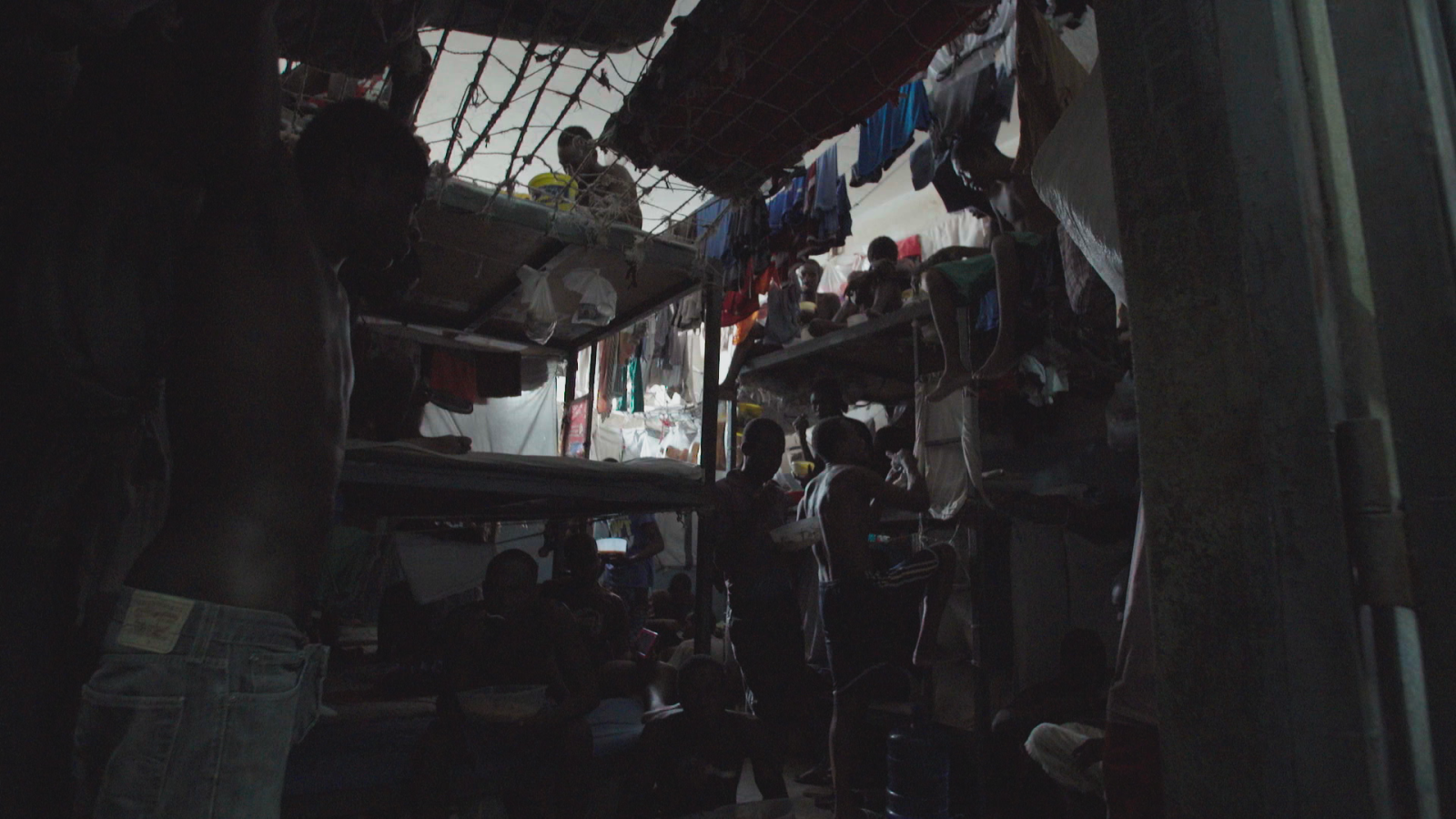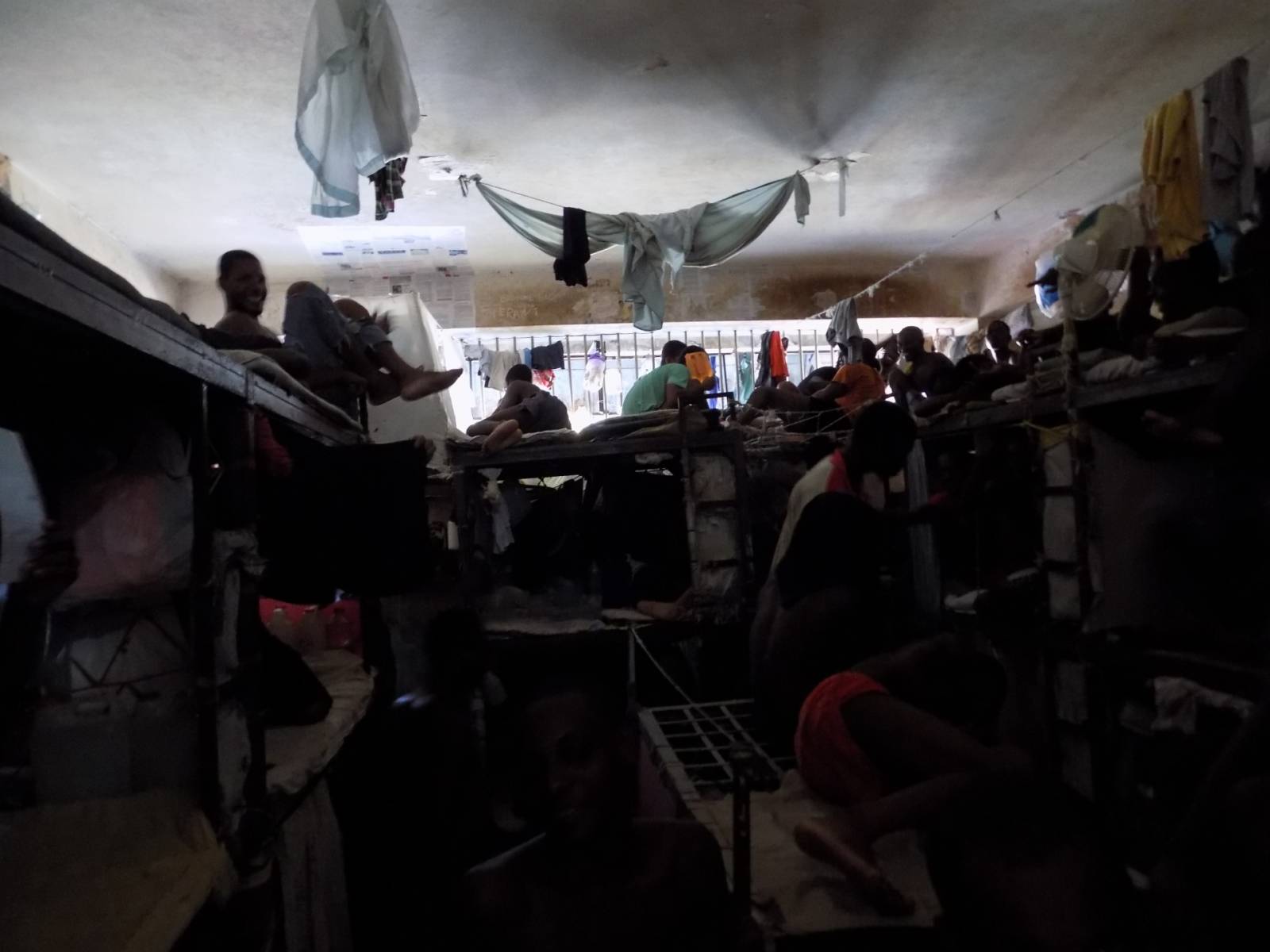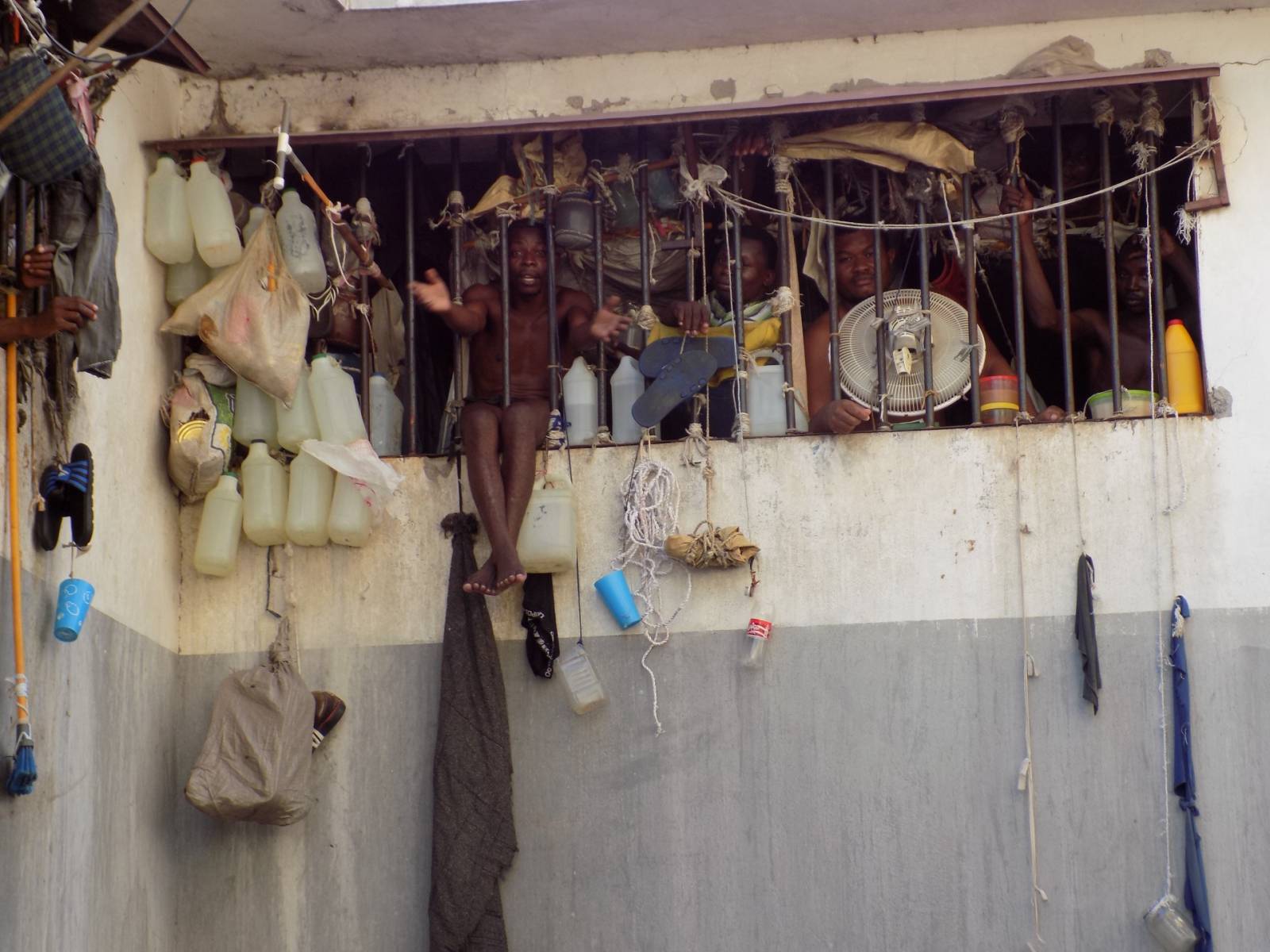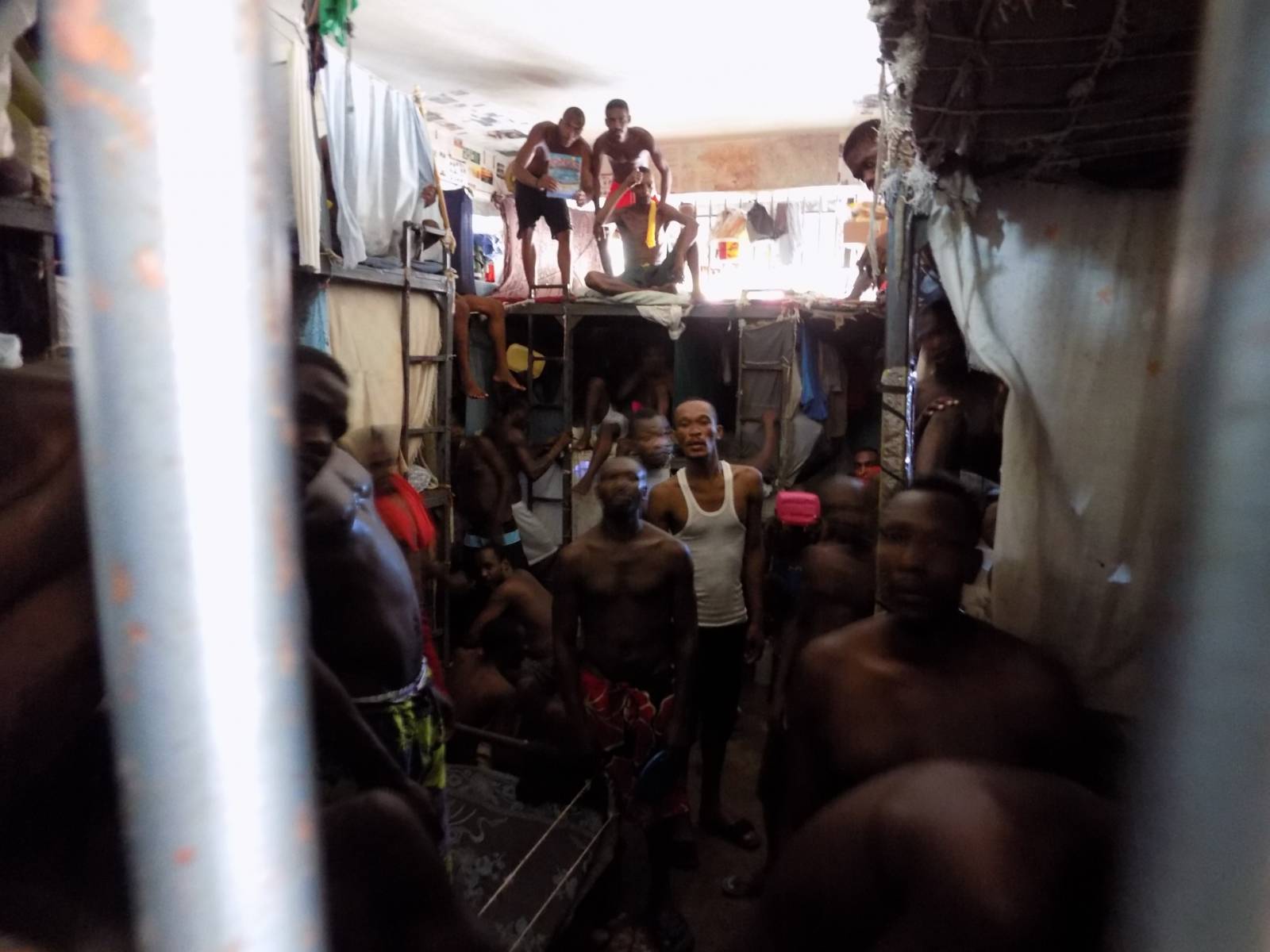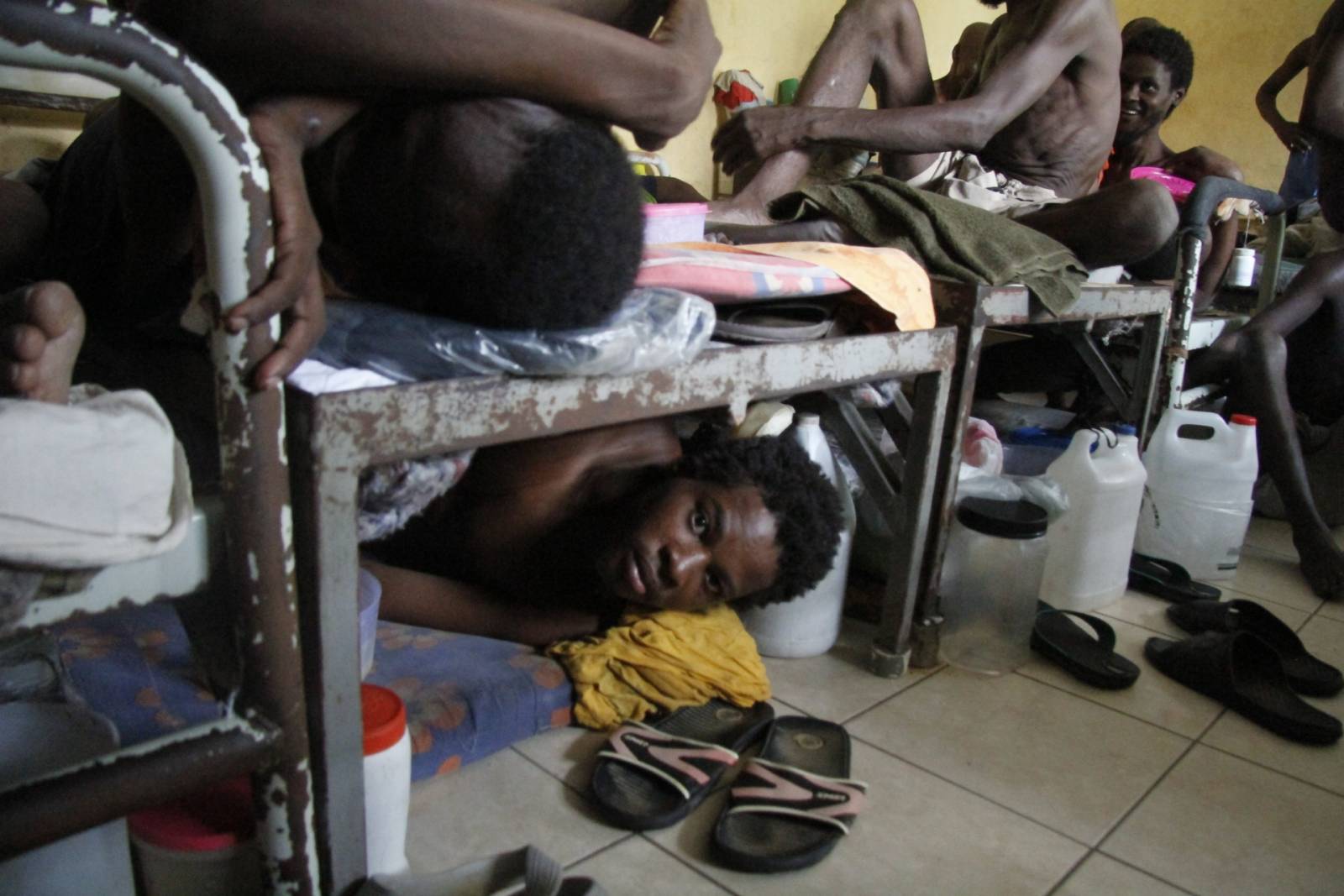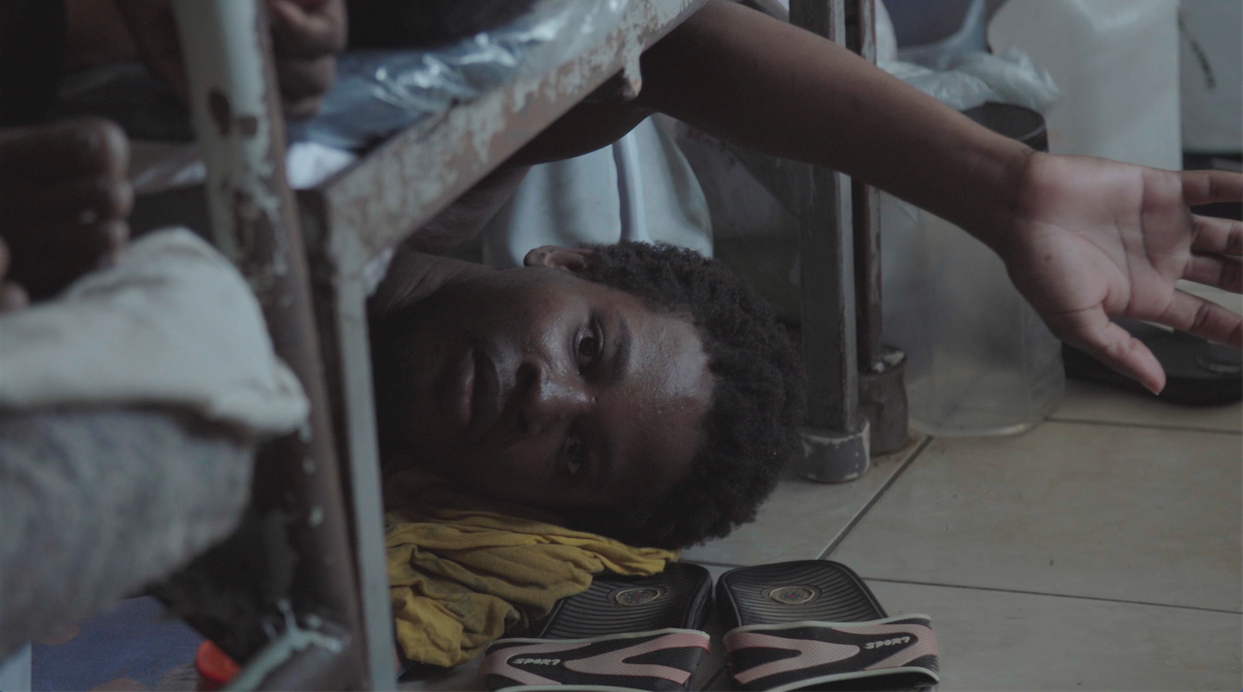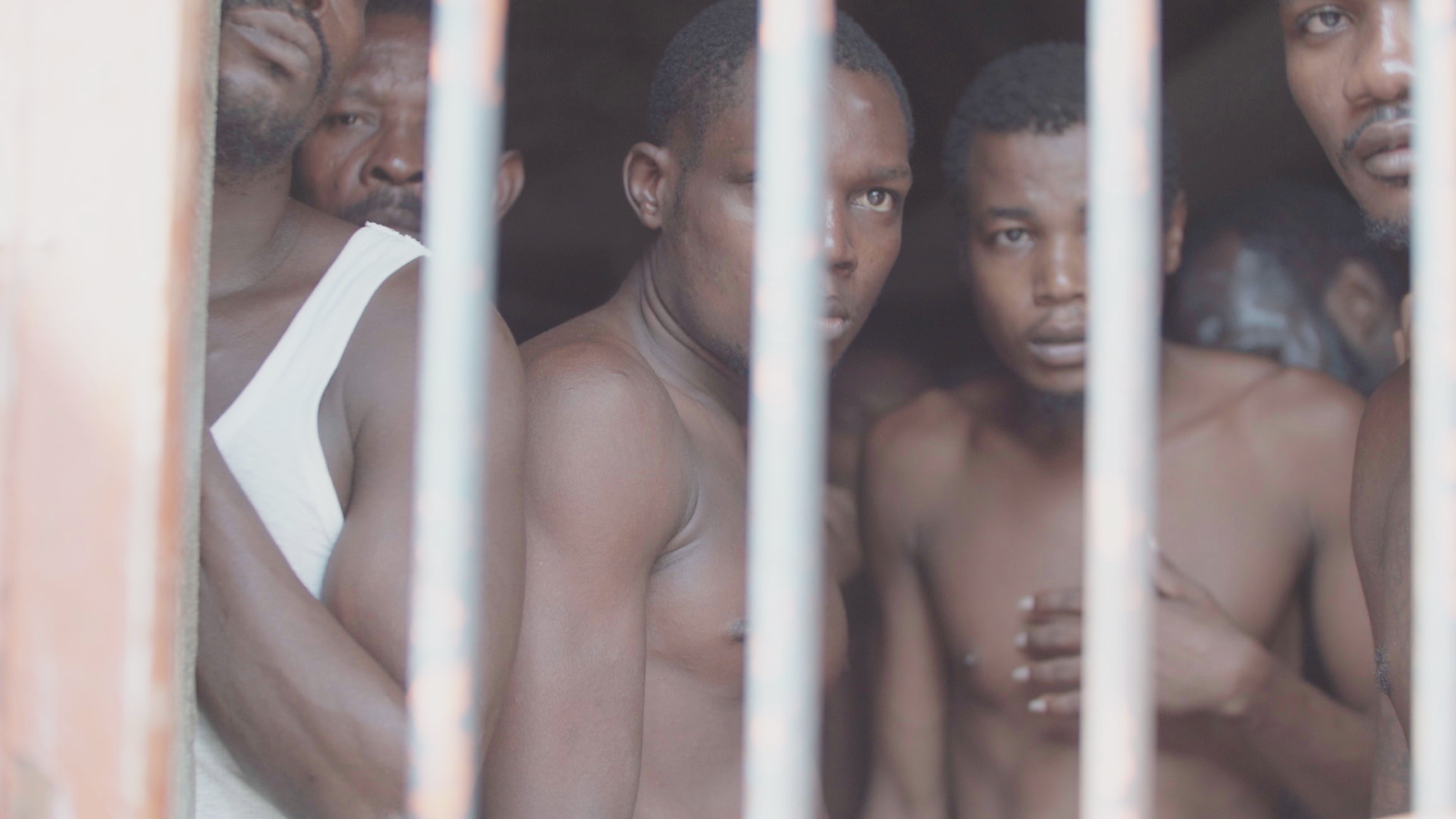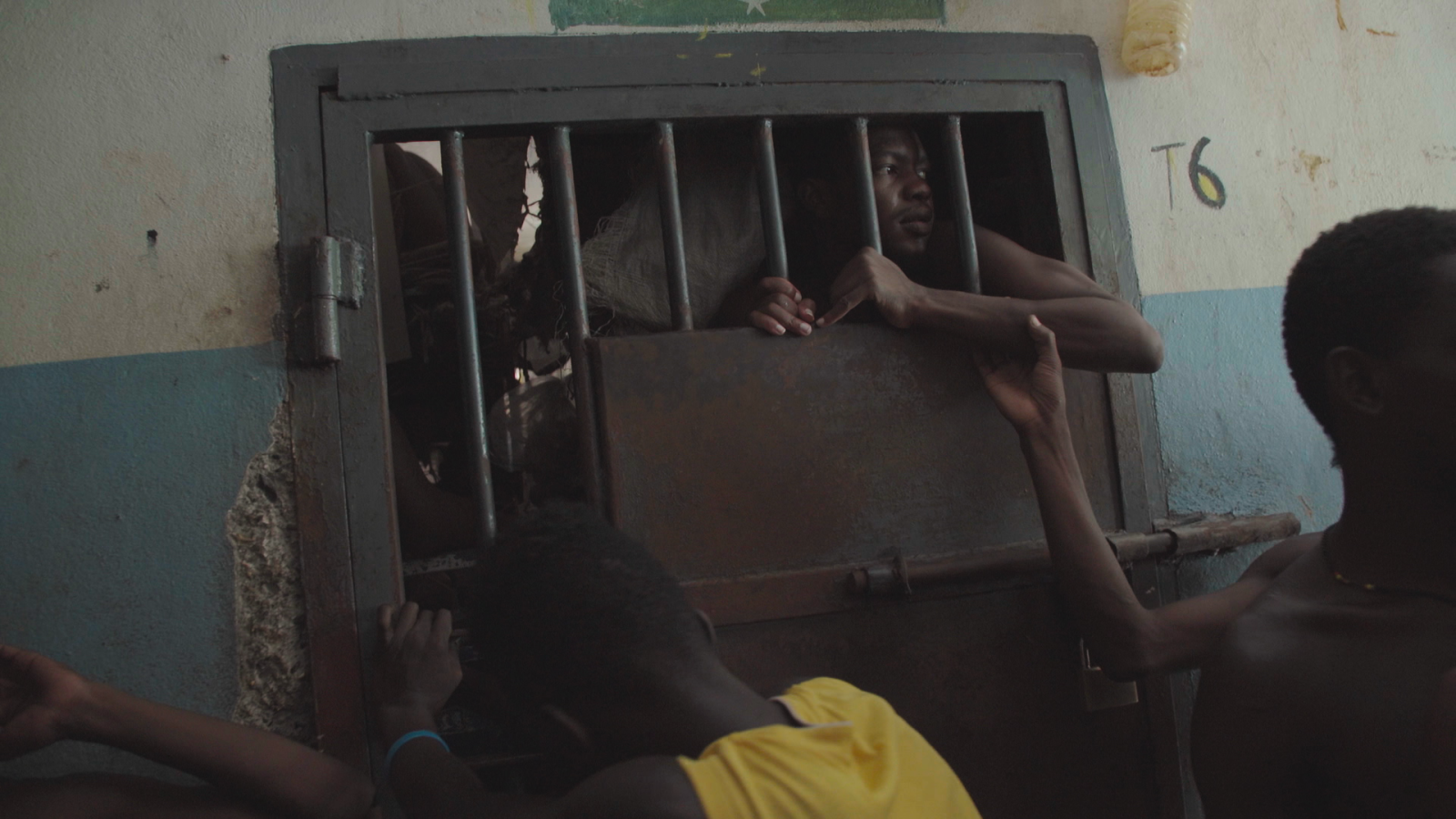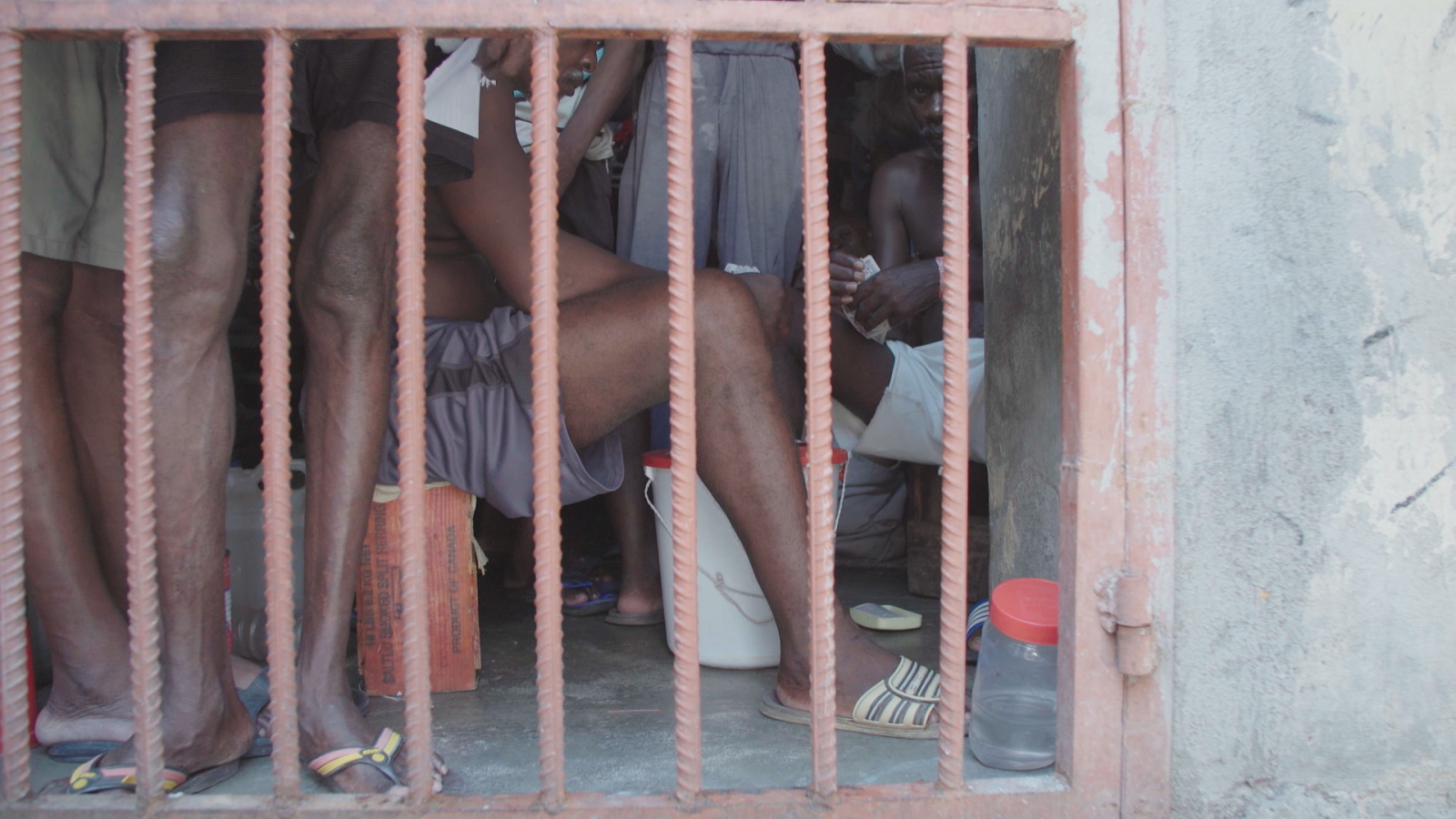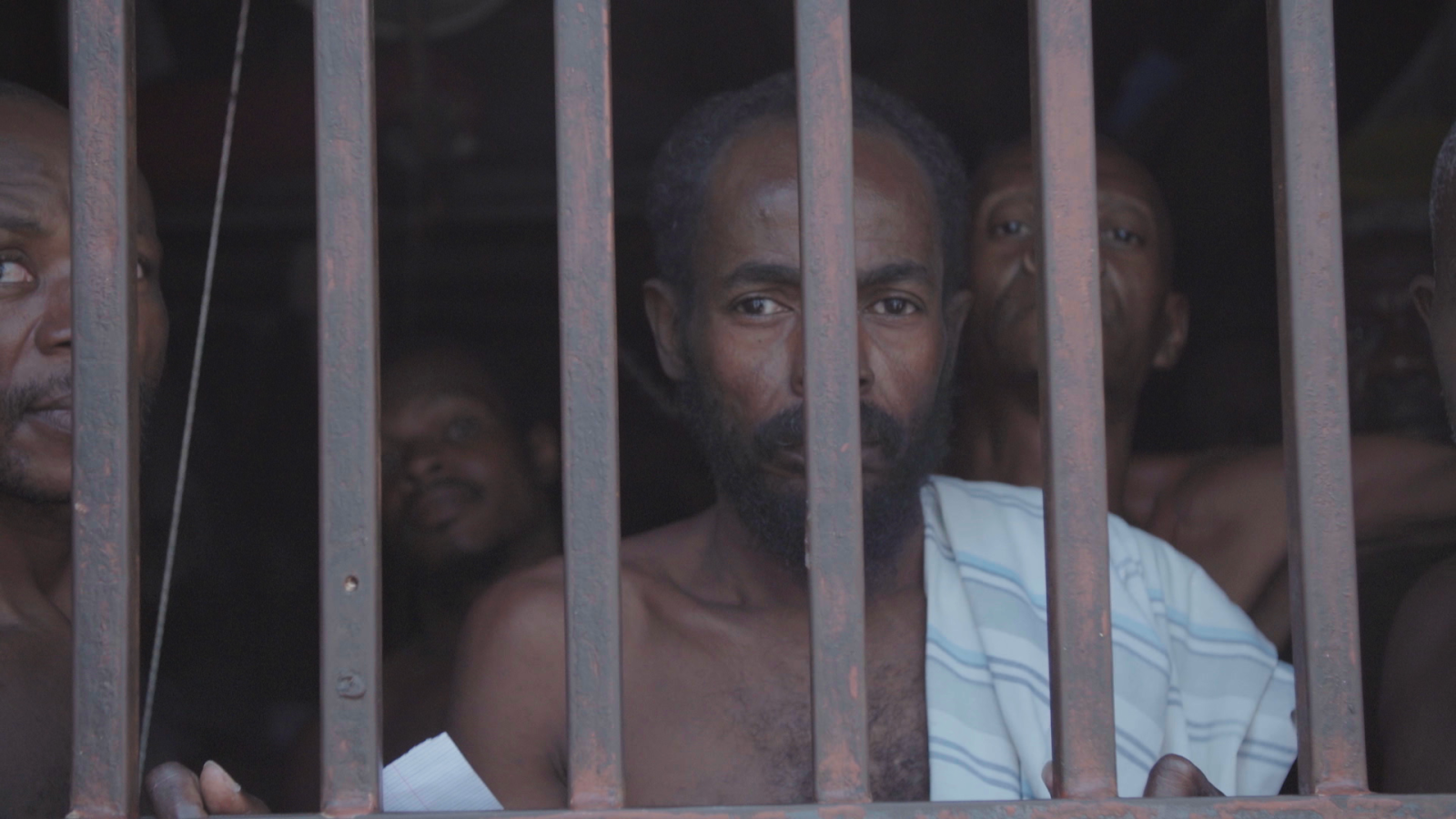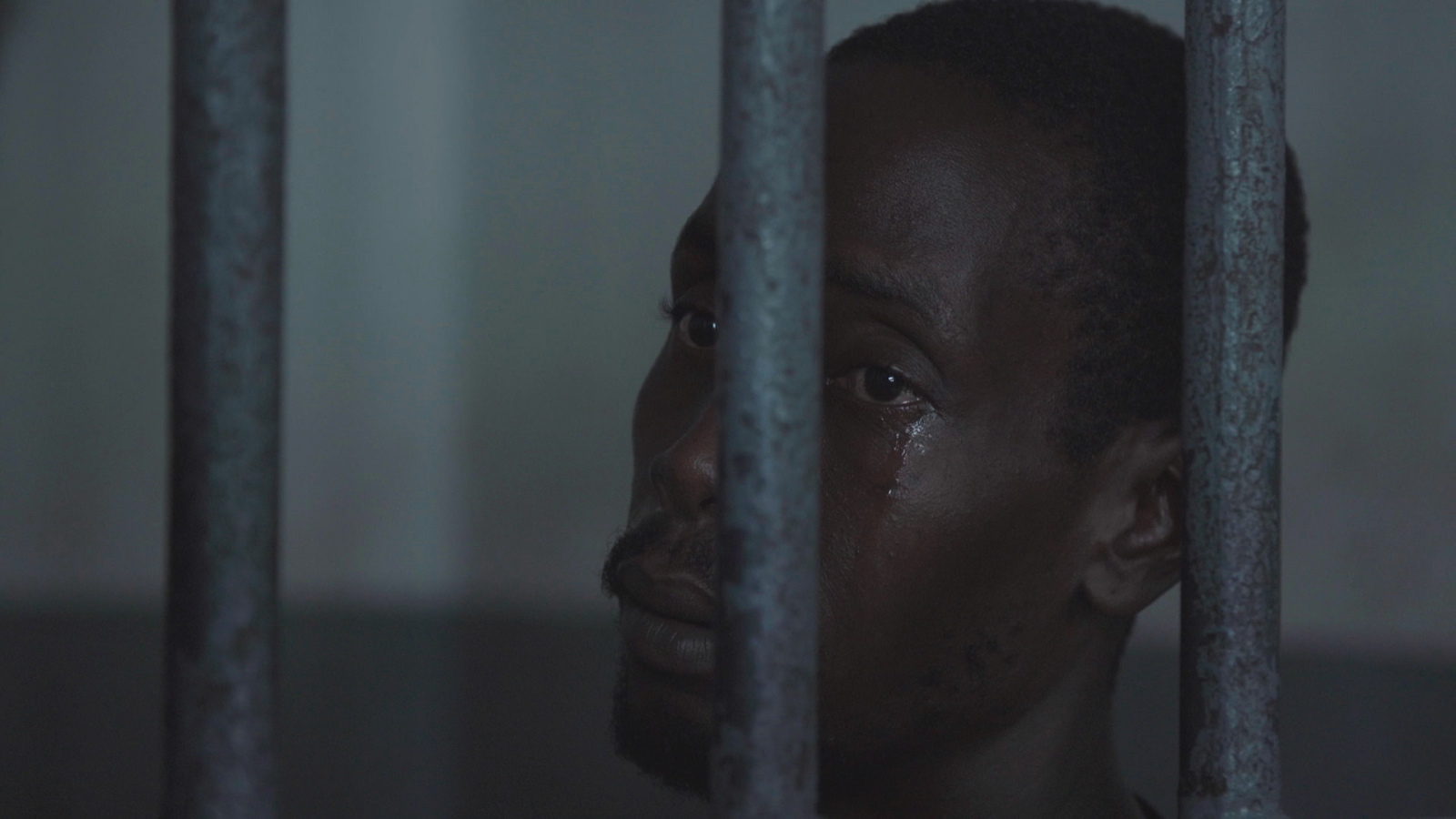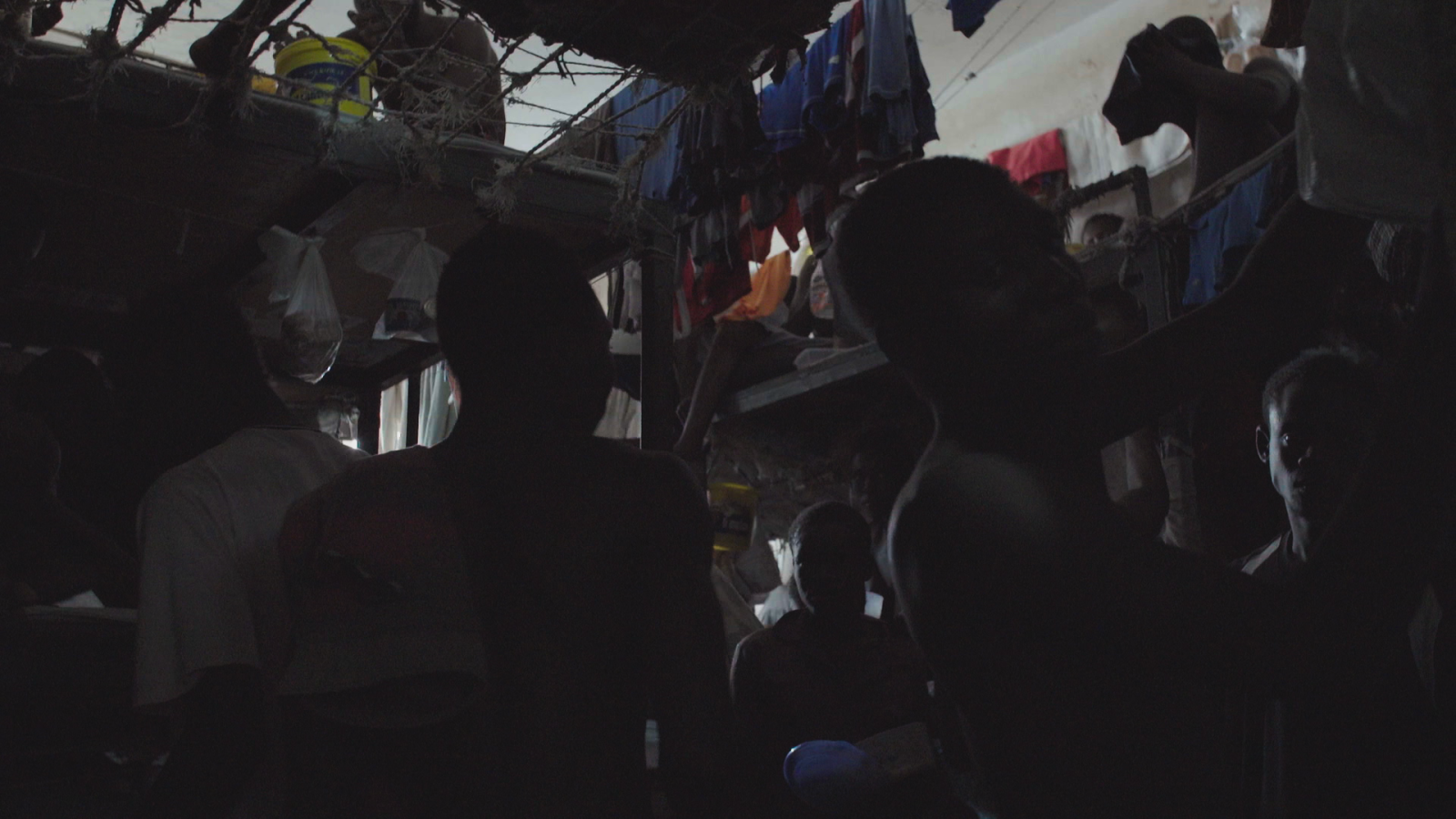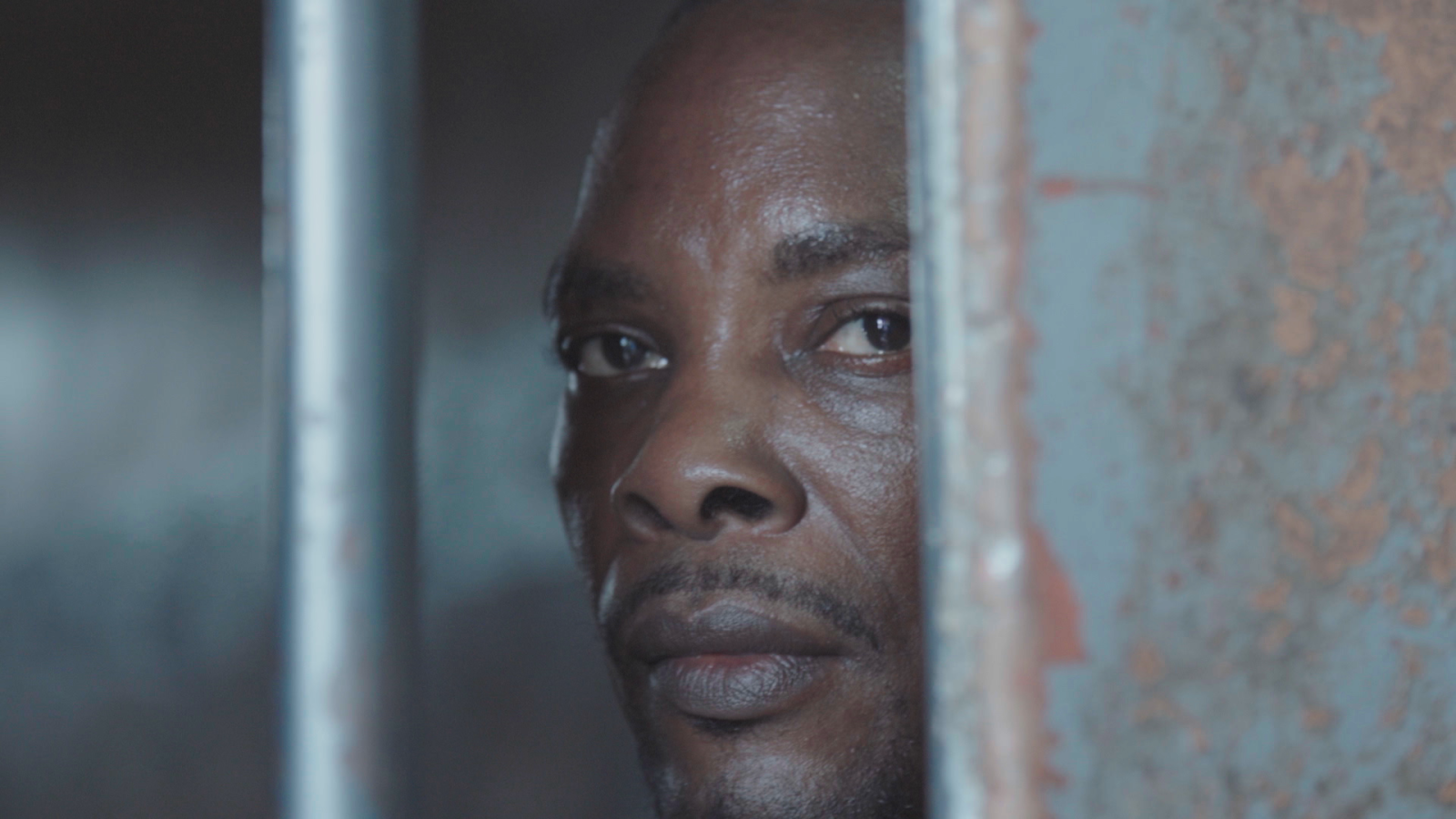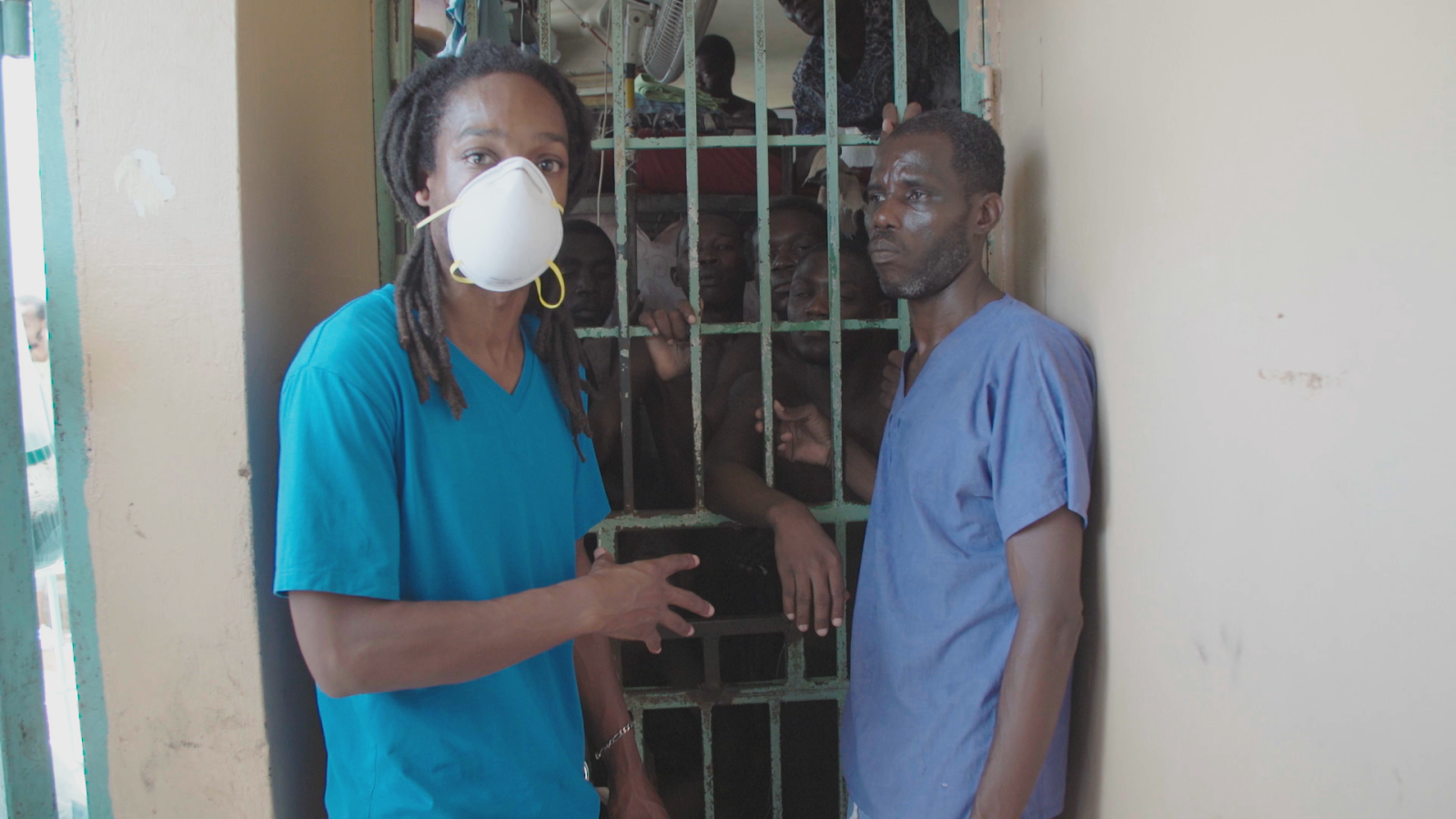— Published on 1 June 2017.¶
Seyi Rhodes. “I went to Haiti to make this documentary basically. I managed to get permission through a lady called Florence Elie [Human Rights defender, ‘Protector of citizens’]. We suggested her to expose prison conditions. Then she invited us to come and was keen to do it because it was the end of her period in the job. She wanted to show what happened in here.
This is why we went. During the course of the trip, we were there for two weeks. I went to the national penitentiary seven of eight times. It ended up being nearly three weeks because we got stuck because of the hurricane. Then, we went to the old women prison at Petion-ville, which is now closed down so I saw the conditions there, the state it was in. A woman who had been there, who is now released, really brought that to life.
I have to say that the older prison made a lot more sense. More crowded but smaller. It was pretty chaotic but it made more sense in terms of the way things worked out in there. I also went to the brand new women’s prison, built by Americans. It is literally shiny, blue and white. It looks like something out of a movie like Orange is the New Black. Really, it is the same as that. It’s got solar panels on the roof, a huge area of batteries to store all the energy and they filter all the water, it is a kind of self-contained unit.
Looking at it, it was obvious that it was built to stop the prison breaks problem. It is designed to be secure even if the rest of the country is not. That seemed very obvious.
As a facility, it looked really good. The women were not too crowded. It was busy but there was space for them to move around. But it is still a prison, so they are stuck in the cells the whole time. There were lots of different rooms for them to do different activities, which again, stood out, because the older prisons did not have extra space like that.
It is pretty much the same people brought from the old prisons to the new ones, but the facility is better and conditions are better. You can see there is less chance of dying in there.
Access.¶
It was easy to ask but you had to be careful about to whom you ask your questions and when. It was not easy to film. Again it was all about the access and we couldn’t make anybody look too bad.
We were authorised to engage with prisoners as long as they gave us their permission. That is one of the reasons why prisoners don’t get much attention. It is because it is so difficult to move around in that space, even the prison guards themselves don’t go in very much. You have maybe one or two guys who go with you. They are around but not very near you. It does feel a little bit unsafe at times. They collaborate with the prisoners to make it work. As a result, you get the feeling that there are places in the prison where the guards don’t really go too much.
And now…¶
I still have contact with BDHH who told me they saw a massive increase of various diseases: cholera and TB among them. There has been a huge outbreak at the beginning of that year. There was an alarming level of weekly deaths. I think the documentary has raised the issue and put a little bit more pressure on everybody involved. There is more talk about the issue.
It seems Haiti has turned a corner in terms of awareness. This was something people did not really talk about, care about or think about. I think now it is much more common for people to know and to understand that the prisons are terrible in this country, that they are worse than terrible and to understand that the justice system does not really work.
These things are now accepted and talked about, understood. This is progress. I think it is much more a concern now, whereas before it was just about putting people away and then forgetting about it.
From my point of view, the men’s prison is completely outdated. It is just not fit for purpose at all. Substantial amounts of money need to be spent in building a new one and it is a horrible thing for Haiti to have to think about, but it just has to happen because the physical structure there is not capable of dealing with the amount of prisoners they’ve got. I believe they‘ve got enough land. The size is there, they could do it, but somehow the issue needs to be raised.
Prisoners need to be moved out. Fundamentally I think food is a major issue and again, it is tough for Haiti to think about people who they’ve locked and need to be fed, a couple of times a day at least. Most of the diseases and problems happen because of proximity and malnourishment. You add stress to people’s situation and it leads to sickness. Cholera spreads easily, as does TB and a lot of skin conditions. The physical facility of the prison being changed and each man having a bed for instance would solve pretty much all of the problems.
You’d still have the pre-trial detention and from that point of view, that would not solve anything but at least, people wouldn’t be dying while waiting for justice. Pre-trial detention is a serious problem. Again, it is just another issue that money needs to be spent on, but if they don’t get the money, they can’t spend it on that.
They need to put their record in order, they need to go digital, the whole court system needs to go digital, it is just not making any sense. The paper system does not make any sense with people who can’t always read in French, earthquakes, hurricanes, whatever…there are countless of possibilities of files to be gone forever. It just leads to this kind of situation. There is also the potential for corruption. All kind of things can go wrong. Since the earthquake, when the courthouse was destroyed, a lot of files were lost. There are people who literally are still there since then and they do not have any file because it was lost. Somebody just needs to pick up those cases, and maybe a department needs to be built.”
